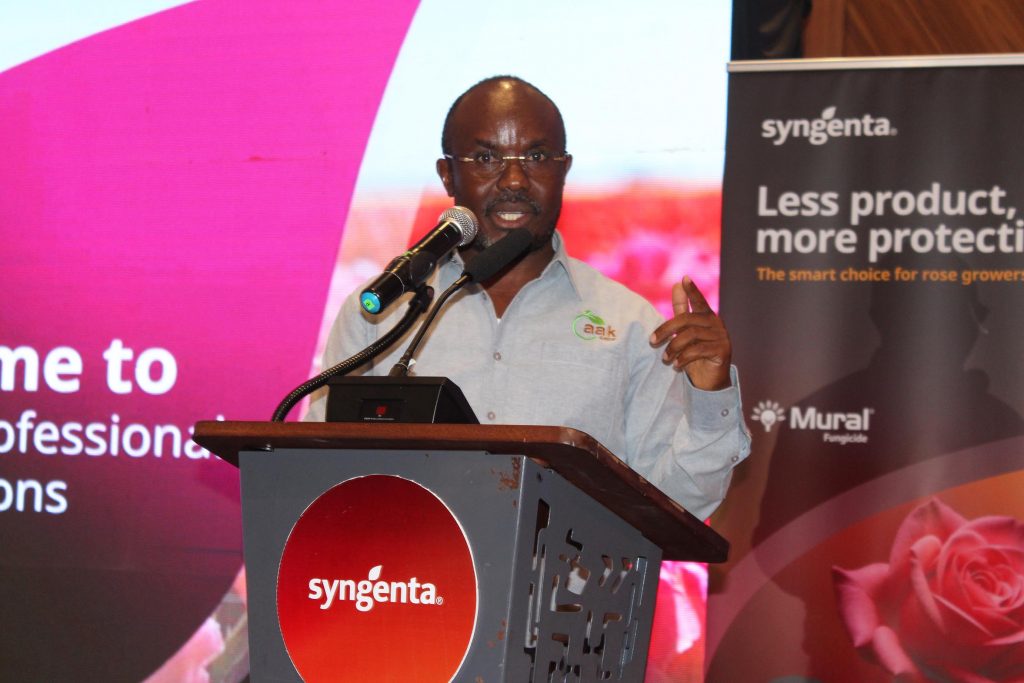The agrochemical industry in Kenya is currently facing an unprecedented set of challenges. Recently, pest control products have come under heightened regulatory scrutiny, with the number of product withdrawals outpacing new introductions. This has led to fewer options for farmers, complicating production processes and increasing costs. This observation was made by

AAKGrow CEO Mr. Eric Kimunguyi during the launch of Mural, a new Powdery Mildew product from Syngenta East Africa. He remarked, “This innovation has arrived at a crucial time, showcasing the resilience and dedication of R&D companies to provide a sustainable toolkit that addresses the growing needs.”
Declining Active Ingredients vs. New Pest Threats
Last year, the industry performed an impact assessment after the withdrawal of eight key active ingredients, including Chlorothalonil, which was vital in combating diseases. Its removal has weakened the support for farmers, raising serious concerns about overuse of the few remaining molecules and the swift emergence of resistance. To address these challenges, he proposed a three-pronged approach. He stressed the importance for growers to read labels, follow re-entry intervals, and use personal protective equipment, while also calling on agrochemical companies to practice ethical marketing, especially in their advertising and sales efforts. He highlighted the need for the government to tackle these issues through coordinated, science-based, and risk-informed strategies.
Mr. Kimunguyi emphasized that the severe effects of climate change have dramatically altered the agricultural landscape, especially in tropical areas. “We have seen a rise in pest and disease pressures.”
The Sustainable Pesticide Management Framework
Mr. Kimunguyi pointed out that four years ago, AAKGrow restructured their strategy and launched the Sustainable Pesticide Management Framework to support the emerging trends. This program, which is currently being executed in Kenya and eight other countries globally, aims to integrate regulatory and stewardship best practices through capacity building, technical collaboration, information sharing, and supply chain integration. In Kenya, this initiative represents an industry investment of approximately 1.5 million dollars.
The SPMF initiative is built on three fundamental pillars:
Pillar 1: Reduce Reliance on Highly Hazarduous Pesticides & Demonstrate Change
Pillar 2: Increase Innovation – not only in the products – Biological control agents, application techniques Artifical intelligence.
Pillar 3: Responsible & Effective Use
He mentioned that AAKGrow has helped in reviewing of the legal draft for the new Pest Control Products (PCP) Bill, which has been finalized after two years. This bill is in accordance with the International Code of Conduct on Pesticide Management. It includes risk assessment, national requirements for risk mitigation, and globally standardized labeling guidelines.
Additionally, the SPMF represents a dedication to advancing sustainability and implementing crucial measures to protect farmers’ health and the environment while boosting agricultural productivity.
The Introduction of Mural: A Significant Breakthrough.
Mr. Kimunguyi remarked that the launch of Mural not only enhances Syngenta’s pest control solutions but also marks a pivotal development for the entire crop protection industry. He expressed hope that industry players, including Syngenta, would take the initiative to offer innovative solutions to address the evolving challenges posed by strict regulations from Kenyan authorities. He encouraged them to continually assess their product portfolio to ensure they align with the new regulations and to promote more sustainable pesticide management practices. He emphasized that the introduction of Mural will play a crucial role in closing the gap and serve as an essential addition to the resistance management toolkit.
Challenges Faced by Growers
Mr. Kimunguyi recognized the vital role of Kenyan flower growers in adding colour to the world, stressing that their contributions should be acknowledged. He pointed out the various challenges these growers encounter, particularly the rising international market standards that exert considerable pressure on them to fulfill sustainability criteria while maintaining productivity and profitability. He called on the developers of secondary standards to encourage and incentivize smallholder farmers, facilitate knowledge sharing, enhance technology, and improve management practices, especially in developing countries, to drive change and foster managerial efficiency.
